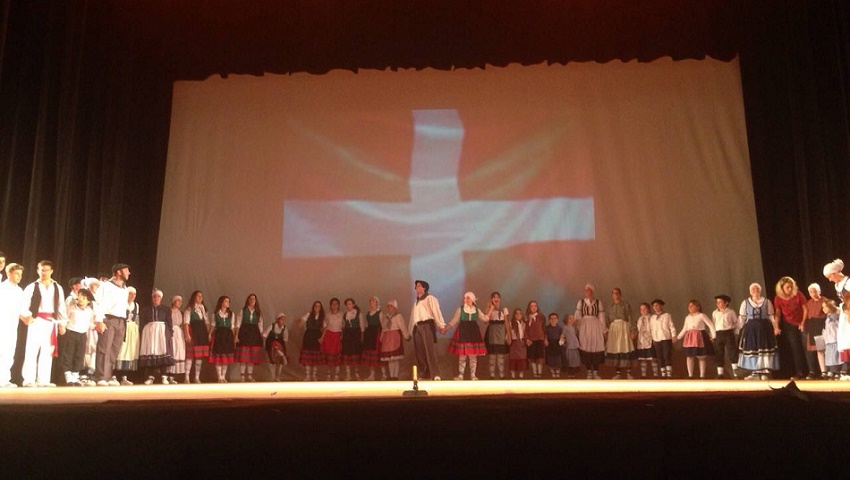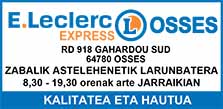The dantzaris of the Union Vasca de Socorros Mutuos Basque club in Bahia Blanca, members of the Beti Aurrera dance group, ended its performances for the year with the presentation of “Irauten,” a show that narrates, through stories, images and choreography, the history of the Basque people, from its origins to the present.
Bahía Blanca, Argentina. On Friday, November 21, at the Municipal Theater in Bahia Blanca, the local dantzaris debuted “Irauten” (lasting), a work that unites stories about the history of the Basque Country with typical dances from there. “Irauten” created by the dance directors of the Union Vasca, put all the groups on stage that comprise Beti Aurrera including the Txiki-txikis from 0-6 years of age, the txikis from 6-10, the Intermediates from 10-15 and the adults from 15-30 years of age.
“The work,” according to Antonella Caponi, adult group director and one of those who staged the show, “began with the story of the prehistoric origins of Euskal Herria, accompanied by huge photos of cave paintings and a perform by children from the ages of 6-10. This continued with a brief description of the Metal age while children held tools.
“The dances began with the smallest children, when describing the importance of Navarre for the Basque culture, and later it continued developing in stages: Mythology, Roman Invasion, agriculture and society, church and society, the Civil War, emigration and Basque club, and present day. Each step was narrated with photos in the background and the dance used for each era was a tool to tell this brief chronology of the Basque people,” Caponi said.
It lasted for just more than an hour and a half and in front of an audience of 300; the program included the following dances. Makil dantza (Txikis Txikis), San Petrike dantza (Txikis Txikis), Akelarre (Adults), Xiberoko Maskarada (Adults), Arcos de flores (Intermediates), Zinta dantza (Txikis), Uztai Haundiak (Adults), Xemeingo Ezpatadantza (Intermediates), Ezpatadantza Gipuzkoano (Adults), Ingurutxo (Txikis), Fandango en romería (Intermediates), Zapatain dantza (Txikis Txikis), Kontradantza (Txikis), Dantzari dantza (Adults), Sorgin dantza (Txikis), Danza de Dagas (Intermediates), Arku dantza (Txikis), Fandango and Arin Arin (Adults) and Hator Hator (Adults).
The story told, and each one of the dances staged were better appreciated by the public thanks to the paper summary presented at the beginning of each. The directors of the Beti Aurrera group also highlighted the willingness of the theater that collaborated with lighting and creating an atmosphere that also served to unite all resources used.






 Send to a friend
Send to a friend Add comment
Add comment








